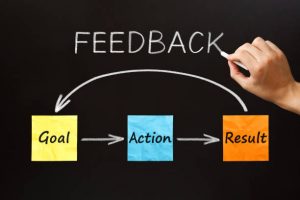In an ever-evolving job market, staying relevant and competitive is crucial.
A personalised professional development plan (PDP) is an essential tool for anyone looking to chart a course for career growth, skill acquisition, and long-term success.
By following our practical step-by-step approach, you can identify your strengths and areas for improvement while aligning your goals with industry demands.
This guide will help you create a personalised PDP that suits your career aspirations and includes steps to identify and pursue skill-building opportunities. Let’s dive in.
Step 1: Self-Assessment

The first step in creating a PDP is understanding where you currently stand. Reflect on your professional achievements, skills, and areas that need improvement.
Consider the following:
- Strengths: What skills and competencies do you excel at? These could include technical abilities, leadership qualities, or soft skills like communication.
- Weaknesses: Are there areas where you feel less confident or have received constructive feedback?
- Interests: What tasks or projects energise and excite you?
- Values: What principles and goals guide your career decisions?
You can use tools like Klara’s skills development platform to evaluate your capabilities effectively. Such tools offer a structured way to assess your competencies and identify gaps in your skill set, which will enable you to proceed to the next step.
Step 2: Define Your Career Goals

Once you’ve completed a self-assessment, it’s time to define your career goals. Your objectives should be SMART:
- Specific: Clearly state what you want to achieve.
- Measurable: Identify how you will measure your progress.
- Achievable: Set realistic goals based on your current situation.
- Relevant: Align your goals with your career aspirations.
- Time-bound: Establish a timeline to achieve each goal.
For example, if you want to become a project manager, your goals might include earning a certification like PRINCE2 within six months or leading a project at your current workplace within a year.
Step 3: Identify Skills and Resources

After defining your goals, pinpoint the skills and knowledge you need to acquire. This step involves mapping out the resources and tools that will help you succeed.
- Skills to Develop: Make a list of the technical and soft skills required to achieve your objectives.
- Training Opportunities: Look for courses, workshops, and certifications to bridge your knowledge gaps.
- Mentorship and Networking: Seek guidance from industry professionals who can offer insights and advice.
Research business trends and trending skills in your preferred industry and look out for tailored development pathways that will help you achieve your career goals.
Step 4: Create an Action Plan

With your goals and required skills in mind, create a detailed action plan. Break down your objectives into smaller, manageable steps. For instance:
- Enrol in Courses: Sign up for an online or in-person course to learn a new skill.
- Set Weekly Milestones: Allocate time each week for learning or practising.
- Apply Skills Practically: Use your new knowledge in your current role or volunteer for relevant projects.
Use a tracking tool or journal to monitor your progress and adjust when necessary.
Step 5: Seek Feedback and Evaluate Progress

Feedback is crucial to professional growth. Regularly evaluate your progress and seek constructive criticism from mentors, colleagues, or managers. This will help you refine your PDP and ensure that you stay on track.
Consider scheduling quarterly reviews to reflect on your achievements and make necessary adjustments. Ask yourself:
- Are my goals still aligned with my career aspirations?
- Have I improved in my target skill areas?
- What challenges am I facing, and how can I overcome them?
Step 6: Stay Flexible
The professional landscape is constantly changing, and your PDP should be adaptable to these shifts. Whether it’s a new industry trend or an unexpected opportunity, be prepared to pivot and update your plan.
For instance, if new technology becomes essential in your field, consider revising your PDP to include training on that technology. Flexibility ensures that your development remains relevant and impactful.
Step 7: Leverage Resources for Continued Growth
Finally, tap into resources that support lifelong learning and development. By staying informed and engaged, you can ensure your professional development remains a priority throughout your career.
A personalised professional development plan is more than just a document; it’s a roadmap to achieving your career aspirations. By following the steps outlined above, you can set clear goals, acquire the necessary skills, and position yourself for long-term success. Start building your PDP today and take control of your professional journey.
Author Profile

- Informed content writer and creator in the UK, always on the lookout for new stories, developments and trends to share.
Latest entries
 Business AdviceDecember 2, 20254 Cost Management Strategies for Transport Business Owners
Business AdviceDecember 2, 20254 Cost Management Strategies for Transport Business Owners BusinessNovember 13, 2025Why Hiring Security Services Could Be Your Best Business Decision
BusinessNovember 13, 2025Why Hiring Security Services Could Be Your Best Business Decision EducationNovember 12, 2025How to Turn Exam Mistakes into Motivation for Success
EducationNovember 12, 2025How to Turn Exam Mistakes into Motivation for Success EntertainmentNovember 5, 2025Crucial Online Gaming Technologies Impacting the User Experience
EntertainmentNovember 5, 2025Crucial Online Gaming Technologies Impacting the User Experience


